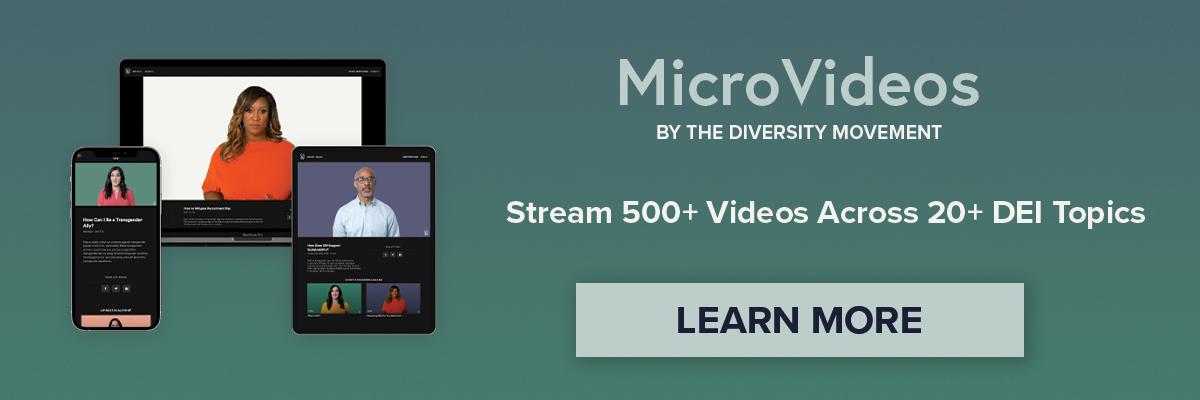Why Microlearning Works and How to Get It Right
Talk to any employee, student, intern, manager, or executive, and they’re likely to say the exact same thing: “Oh, I’ve sat through my share of training sessions that seemed to take forever.”
No matter how engaging the content may be, after a few minutes, our minds start to wander to “what’s for lunch?” or “gosh, I’ve got a stack of unfinished tasks I need to deal with as soon as this is over.” If the training is in-person, you do your best to look engaged. And if it’s virtual, who hasn’t adjusted the playback speed just to get through the whole thing faster?
Too much workplace training is like this: long, boring, and seemingly irrelevant. Is it any surprise that employees don’t retain the information they’re supposed to be absorbing? And what a shame too because most employees truly want to do better at their jobs. Plus, the pace of modern business requires constant updating of professional skills, just to remain current.
What if there were a method of instruction that was fast, engaging, effective, and job-specific?
Microlearning is all of those things. With this to-the-point educational approach, information is packaged into short, easily digestible training units and delivered in small moments that don’t disrupt the flow of the workday.
Each concise training session typically covers only 1-2 topics and can be completed in less than 10 minutes at a time. That’s good news because research shows that employees want information delivered quickly and efficiently, and companies are responding. In the past few years especially, there has been a cultural shift in business training programs toward micro-delivery and on-demand learning.
Why microlearning?
“Today’s employees are overwhelmed, distracted, and impatient. Flexibility in where and how they learn is increasingly important,” a 2014 Bersin by Deloitte report summarizes.
One of the most common obstacles to effective on-the-job learning is lack of time. Typical employees can only devote 1 percent of their workweek to training and development, according to the Deloitte report. Microlearning optimizes that tiny window of time by providing information quickly and directly.
According to a study in the Journal of Applied Psychology, learning in short, bite-sized pieces makes learning 17% more efficient. Microlearning also improves learning and supports long-term knowledge retention by up to 80%.
Shorter content is also less intimidating. When employees know the training session will only take a few minutes, they are more likely to dive in and stick with it until the end. That is, if the content is engaging. Even though microlearning content is quick to get through, it still has to be interesting, informative, and relevant.
Great microlearning isn’t just brief; it’s also entertaining and easily accessible. Most microlearning modules can be accessed from a phone or tablet, anywhere there’s an internet connection. Employees can choose when to complete the training, scheduling it around their other duties.
The on-demand nature of microlearning also makes optional professional development easier. Workers can watch a short video while they’re eating lunch, while watching their child’s basketball practice, or while waiting for an appointment to start.
To suit different styles of learning, content might be presented in short videos, in-app tutorials, brief articles, podcasts, or even games. Each learner can go through the information at their own pace, repeating videos and modules as necessary to reinforce understanding and increase retention.
Why now?
The demand for microlearning content has increased in the last few years, as workplaces have moved to remote work or hybrid office environments. Along with the distractions of the modern workplace – like emails, phone calls, and team notifications – remote and hybrid workers are also often managing pets, children, family members, and household distractions. Mix in worries about the pandemic, and it’s just harder for everyone to concentrate these days.
Microlearning is a proven way to effectively engage these distracted adult learners because it works with the brain. The average person’s attention span is somewhere between 3 and 11 minutes, and most people won’t watch a video that is longer than 4 minutes long.
With a dispersed workforce, organization leaders must work harder to connect with employees and reinforce company culture. By providing access to high-quality learning resources, companies can create a culture that embraces learning and improves overall productivity. A common knowledge base gives all workers a foundation for collaboration, no matter where they are working from. Short videos that feature fellow employees sharing their knowledge can build trust. Microlearning programs that use gamification systems can reward accomplishments and encourage teamwork.
Microlearning is nimble and cost-effective, as each module can be updated independently to reflect user feedback or training changes. It is also versatile. Organizations can use microlearning methods for a variety of topics including:
- Onboarding
- Compliance
- Diversity, equity, and inclusion awareness
- Technology updates
- Professional development
Where to start?
Revamping your existing training courses into a microlearning format can take significant time and resources. Luckily, a wealth of microlearning content already exists so that organizations can help their employees learn more effectively, right now, today.
From diversity, equity, and inclusion (DEI) training to customer service best practices, learning and development staff can find multiple online modules to suit their immediate needs or to augment their in-house training. Here are a few of the best short-form learning platforms.
- MicroVideos by The Diversity Movement: Short videos on a variety of topics promote a more diverse, equitable, and inclusive workplace culture. Actionable takeaways help viewers put DEI principles into practice right away.
- Axonify: Short, mobile-friendly training modules explore skills vital for frontline employees and customer service professionals like retail associates, restaurant workers, and call center agents.
- Eloomi: The company partners with a number of content providers to curate microlearning modules for employee development, onboarding, and compliance.
- Spekit: Built by sales professionals, the platform is especially geared toward Salesforce users. Micro-training modules, quick tips, and a resource library are integrated into apps like Slack, Outlook, and Chrome.
- Tigerhall: Advice from industry leaders is presented in short videos, podcasts, and quick reads, with an emphasis on team building, leadership, and management skills.
Remember: your employees are already consuming microlearning content, whether they realize it is “microlearning” or not. When they want to know how to cook a certain dish, pronounce a word, fix a household appliance, change a car part, or more, they’ll ask Google, watch a quick video on YouTube, or consult Wikihow to find just-in-time answers to their questions. Now, you can provide that same type of training for work.
Amber Keister is a Content Writer and Editor at The Diversity Movement. She has spent more than 20 years as a journalist for publications throughout the South Comment end . She believes that everyone has a story to tell; they are only waiting for someone to listen.







